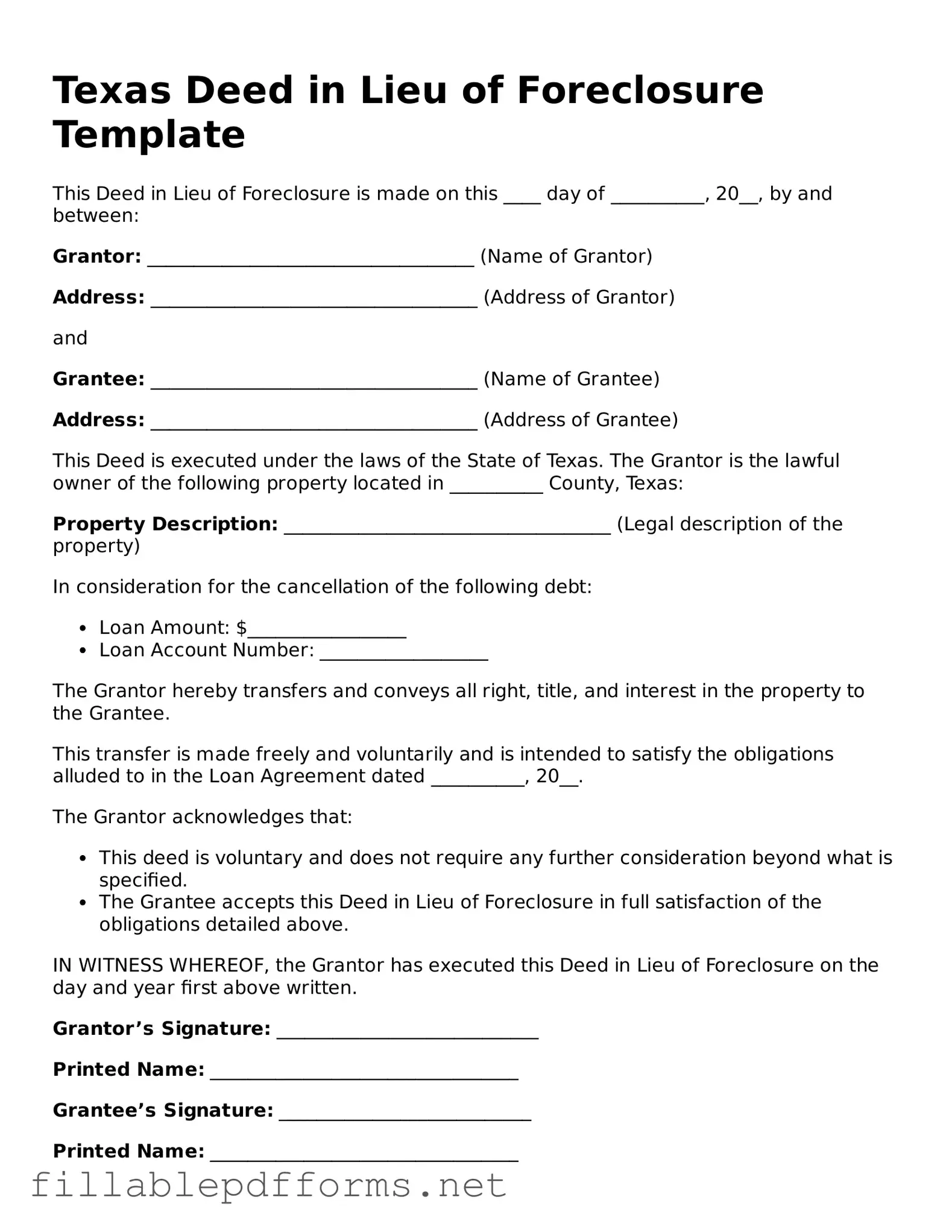In Texas, homeowners facing financial difficulties may encounter the Deed in Lieu of Foreclosure as a viable alternative to the traditional foreclosure process. This legal document allows a property owner to voluntarily transfer the title of their home to the lender, effectively relinquishing ownership in exchange for the cancellation of the mortgage debt. By opting for this route, homeowners can avoid the lengthy and often stressful foreclosure proceedings, which can have lasting negative impacts on their credit scores. The Deed in Lieu of Foreclosure process typically involves several key components, including the necessity for the homeowner to be in default on their mortgage, the lender's acceptance of the deed, and the potential for the homeowner to negotiate terms that may include a release from liability for any remaining debt. Additionally, this form can be beneficial for lenders, as it allows them to take possession of the property more swiftly and with less expense compared to a foreclosure. Understanding the implications, benefits, and requirements of the Deed in Lieu of Foreclosure is essential for both homeowners and lenders, as it serves as a practical solution in times of financial distress.
